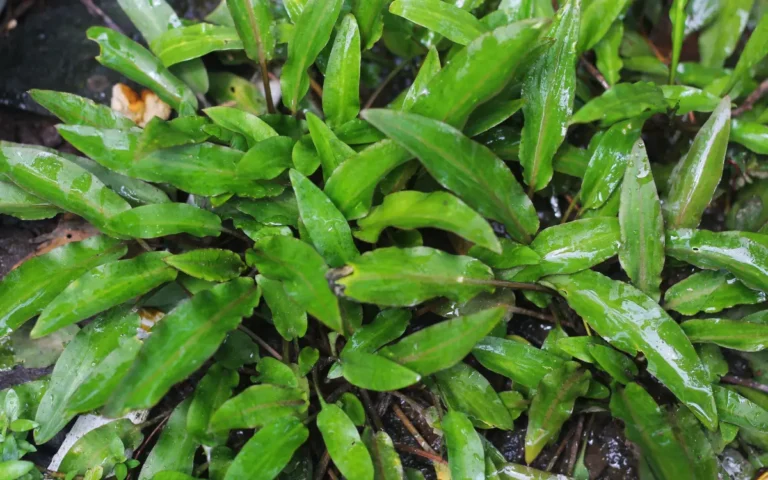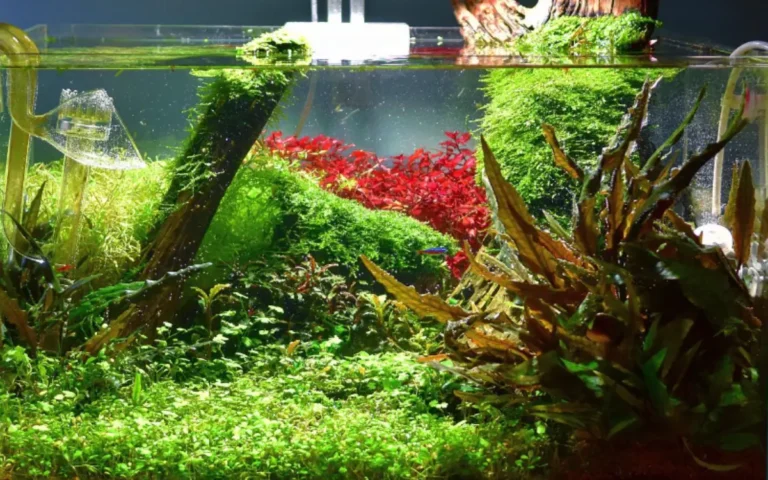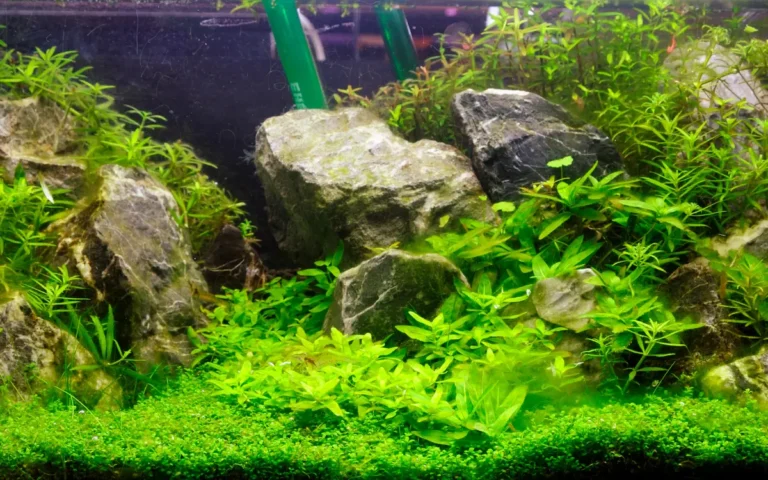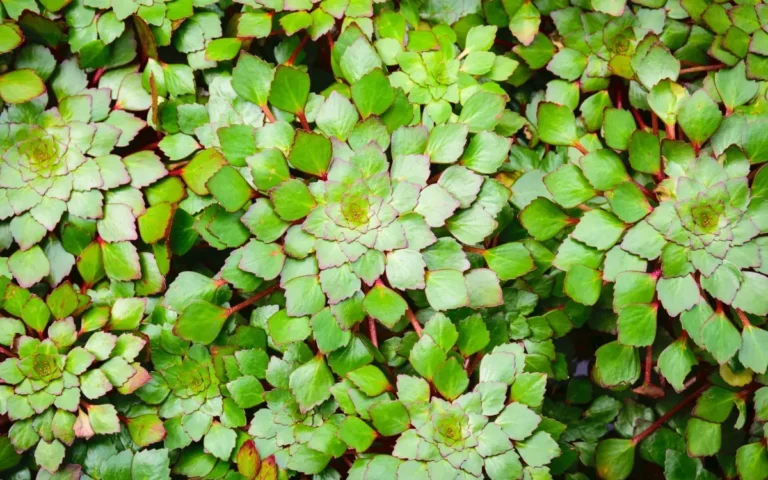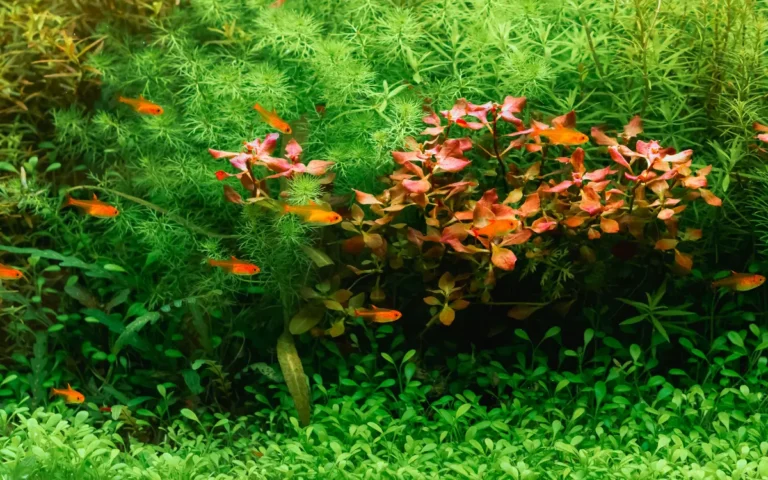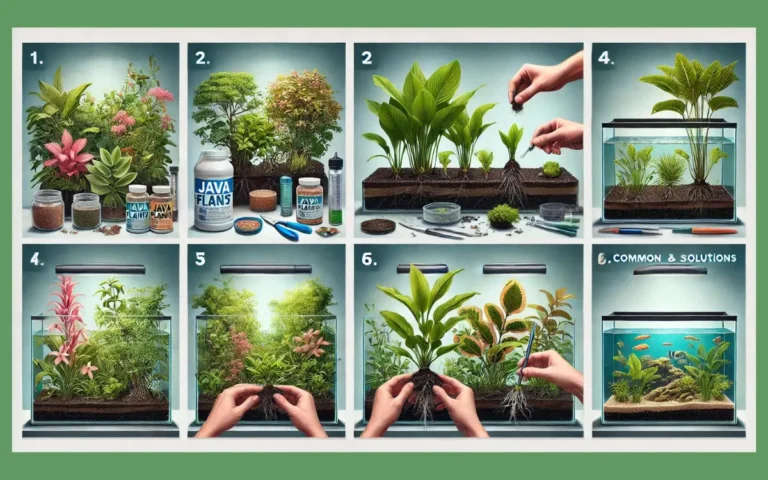20 Plants for Betta Fish Tanks: A Beginner’s Guide
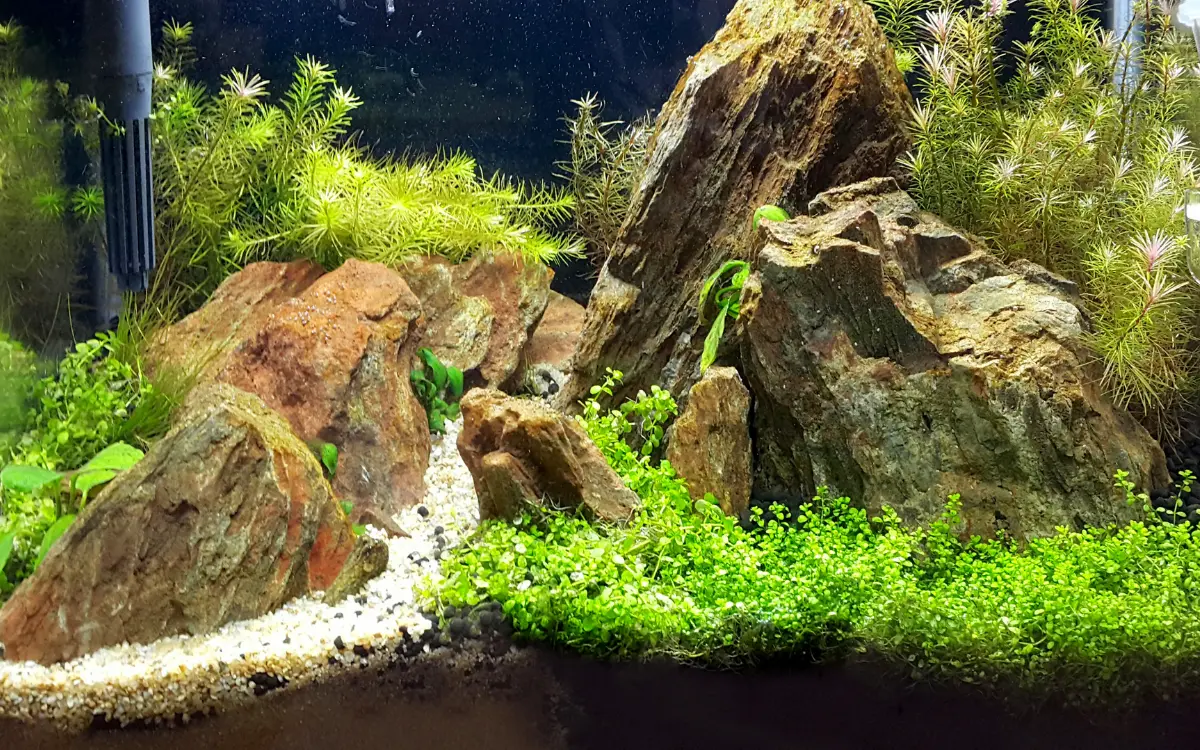
Decorating your betta fish tank can be an exciting journey, especially when you choose the right plants. Not only do these plants enhance the beauty of your tank, but they also create a natural and healthy environment for your betta.
Plant per gallons for betta fish
| Tank Size (Gallons) | Number of Plants (Minimum) | Number of Plants (Optimal) | Number of Plants (Maximum) |
| 1 Gallon | 1 | 2 | 3 |
| 2.5 Gallons | 2 | 3 | 4 |
| 5 Gallons | 3 | 4 | 5 |
| 10 Gallons | 4 | 5 | 7 |
| 20 Gallons | 5 | 7 | 10 |
| 30 Gallons | 7 | 9 | 12 |
list of 23 beginner friendly plants
1.Java Fern
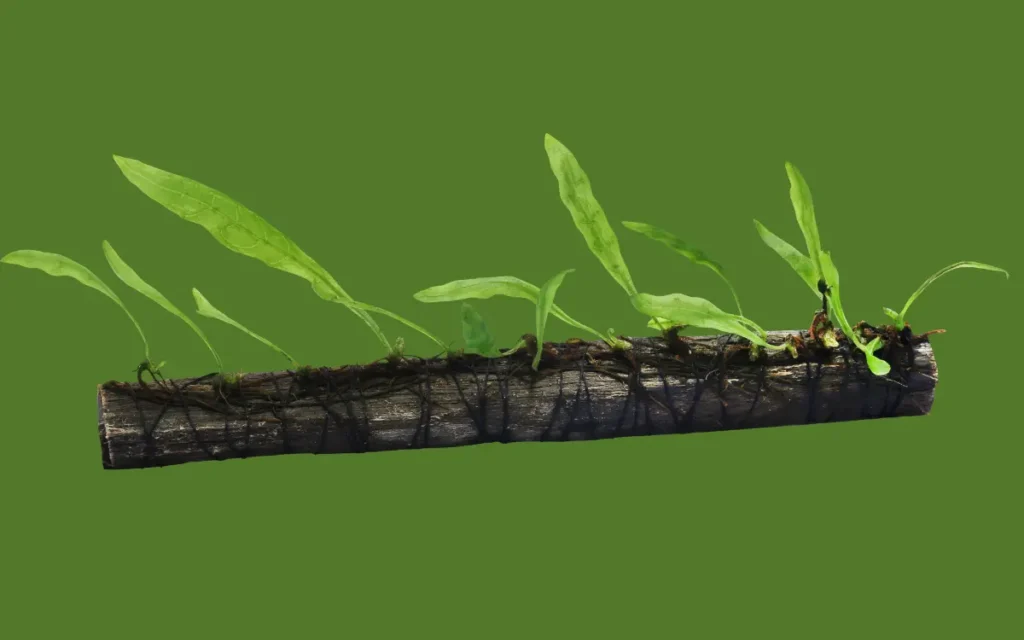
- Scientific Name: Microsorum pteropus
- Common Name: Java Fern
- Origin: Southeast Asia
- Skill Level: Easy
- Light Level: Low to moderate
- Temperature Range: 68-82°F (20-28°C)
- Flow Rate: Low to moderate
- CO2 Requirement: Not necessary
- Special Notes: Java Fern is a hardy plant perfect for beginners. Its beautiful green leaves create a natural and calming environment for your betta fish. Just attach it to driftwood or rocks and watch it thrive.
Originating from Southeast Asia, Java Fern is a staple for first-time tank owners. This hardy plant thrives in various conditions, making it forgiving for beginners. Its resilience and adaptability to low light make it an ideal choice. Java Fern’s broad, green leaves provide excellent hiding spots and a natural feel to your tank.
2.Anubias
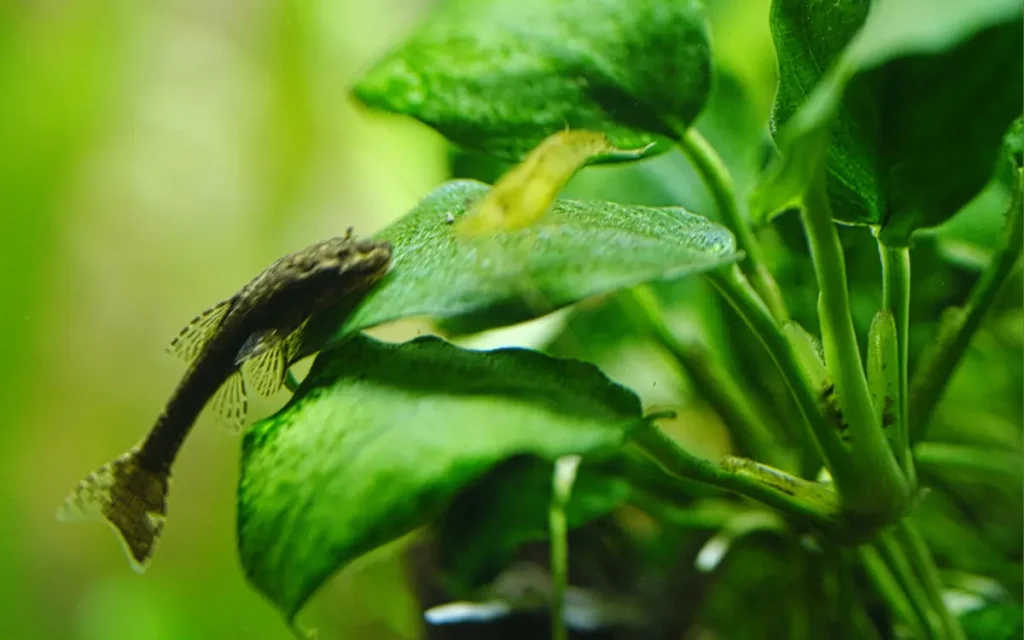
- Scientific Name: Anubias barteri
- Common Name: Anubias
- Origin: West Africa
- Skill Level: Easy
- Light Level: Low to moderate
- Temperature Range: 72-82°F (22-28°C)
- Flow Rate: Low to moderate
- CO2 Requirement: Not necessary
- Special Notes: Anubias are tough plants that can survive in various conditions. Their broad leaves give your betta plenty of places to rest and hide. They grow slowly, so they don’t need much maintenance.
Hailing from the rivers and streams of Africa, Anubias is another tough plant that requires minimal care. Its slow growth and broad leaves offer a serene underwater landscape, perfect for betta fish to explore and rest upon.
3.Marimo Moss Balls
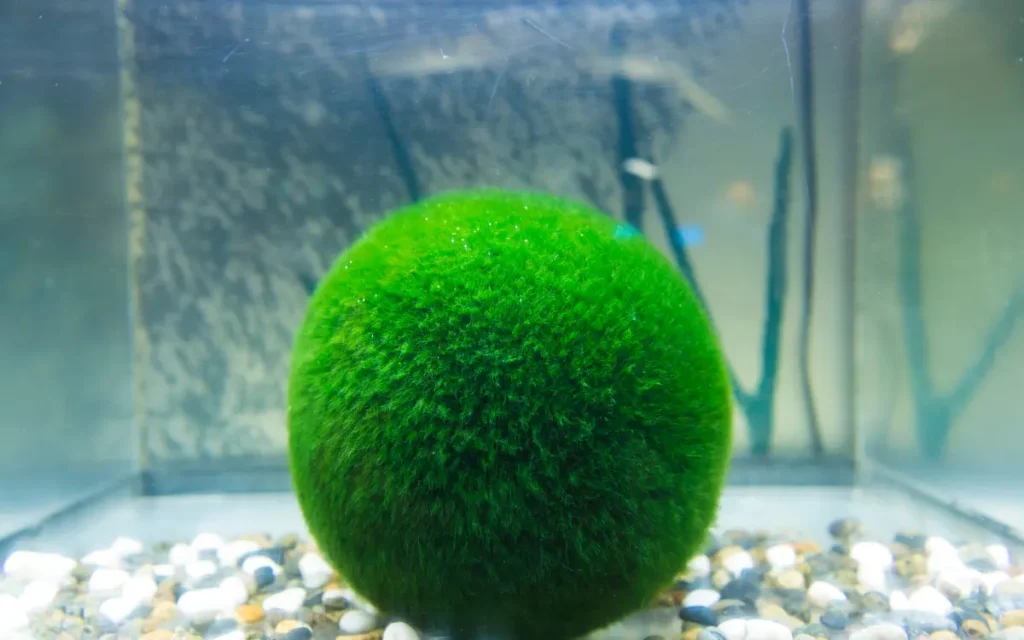
- Scientific Name: Aegagropila linnaei
- Common Name: Marimo Moss Balls
- Origin: Japan and Northern Europe
- Skill Level: Easy
- Light Level: Low to moderate
- Temperature Range: 68-77°F (20-25°C)
- Flow Rate: Low
- CO2 Requirement: Not necessary
- Special Notes: These green, velvety balls are not only cute but also functional. They help keep your tank clean by absorbing nitrates. Betta fish love to play with them, making them a fun and beneficial addition.
These unique green algae balls originate from freshwater lakes in Japan, Iceland, and Estonia. Marimo Moss Balls are not only visually appealing but also beneficial for water quality. Their soft, velvety texture makes them a favorite among bettas, providing both entertainment and a touch of nature.
4.Cryptocoryne Wendtii
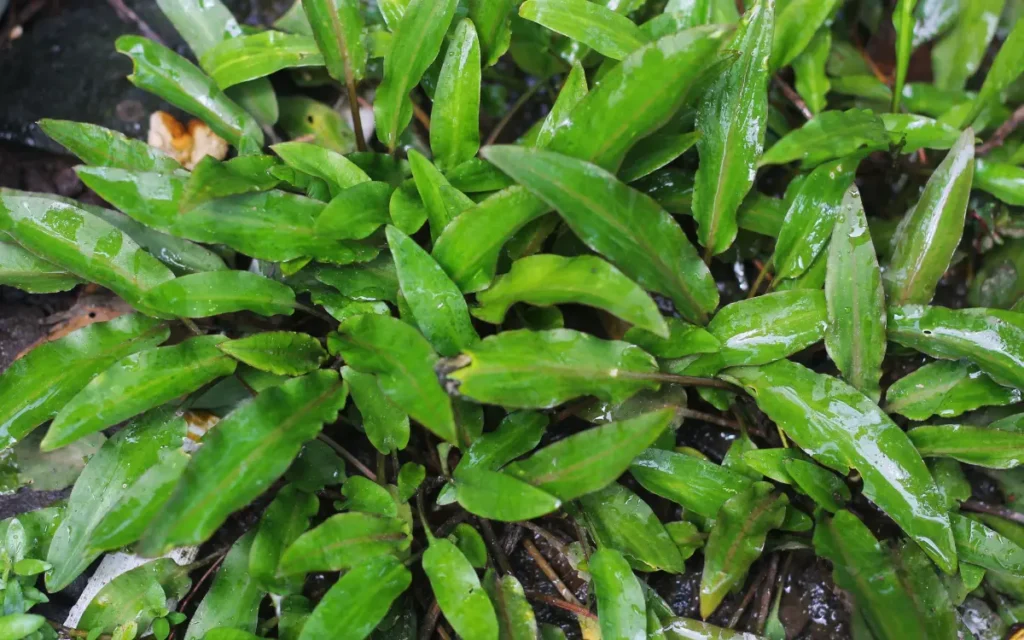
- Scientific Name: Cryptocoryne wendtii
- Common Name: Crypt Wendtii
- Origin: Sri Lanka
- Skill Level: Easy
- Light Level: Low to moderate
- Temperature Range: 68-82°F (20-28°C)
- Flow Rate: Low to moderate
- CO2 Requirement: Not necessary
- Special Notes: With its wavy, textured leaves, Cryptocoryne Wendtii adds elegance to any tank. It’s perfect for creating hiding spots and doesn’t need much light or care, making it great for beginners.
Native to Sri Lanka, Cryptocoryne Wendtii is renowned for its adaptability to various water conditions. This plant’s lush, wavy leaves create a dense, green backdrop, making it a favorite for creating a jungle-like atmosphere in your tank.
5.Water Sprite
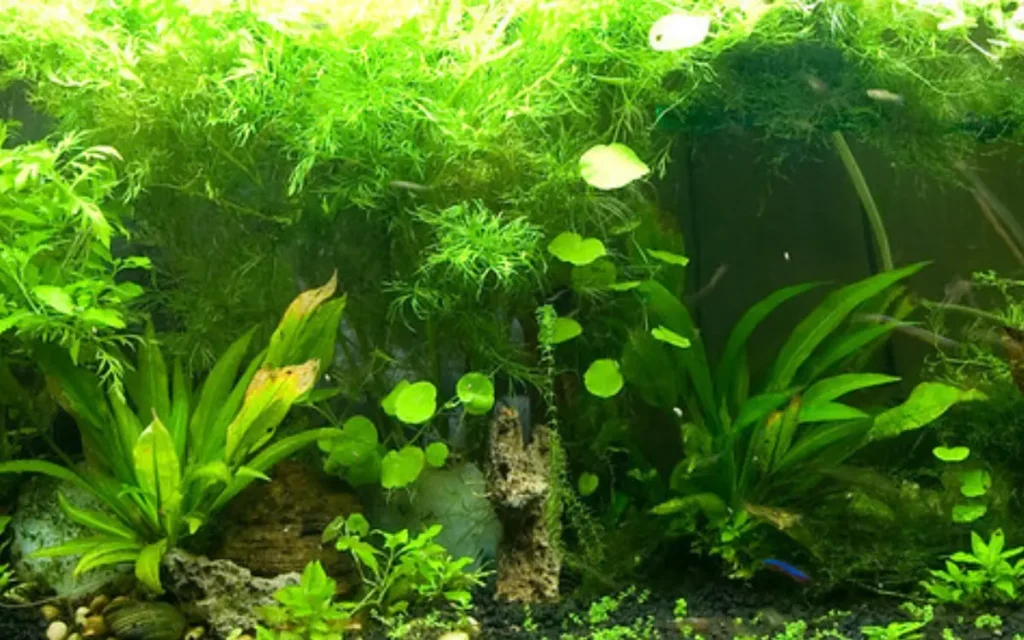
- Scientific Name: Ceratopteris thalictroides
- Common Name: Water Sprite
- Origin: Worldwide
- Skill Level: Easy
- Light Level: Moderate
- Temperature Range: 68-82°F (20-28°C)
- Flow Rate: Low to moderate
- CO2 Requirement: Not necessary
- Special Notes: Water Sprite grows quickly and provides excellent cover. Its feathery leaves create a lush, jungle-like feel, perfect for your betta to explore and hide in.
Water Sprite, found in tropical regions worldwide, is known for its versatility. It can be planted in the substrate or left floating. Its rapid growth and feathery leaves offer excellent cover and a dynamic environment for your betta to navigate.
6.Amazon Sword
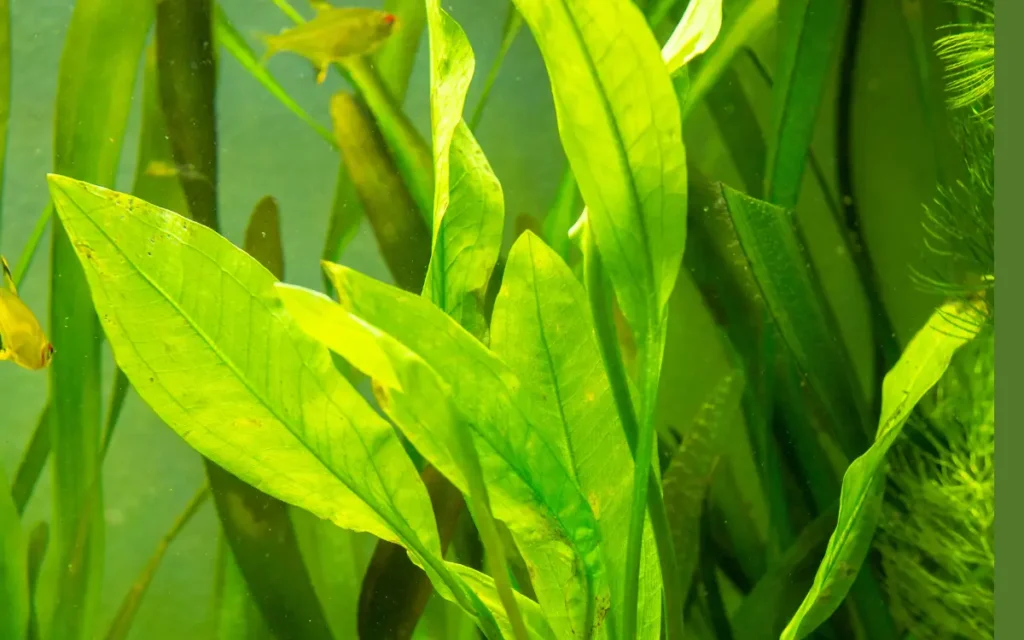
- Scientific Name: Echinodorus grisebachii
- Common Name: Amazon Sword
- Origin: South America
- Skill Level: Easy
- Light Level: Moderate to high
- Temperature Range: 72-82°F (22-28°C)
- Flow Rate: Low to moderate
- CO2 Requirement: Beneficial but not required
- Special Notes: Known for its large, broad leaves, the Amazon Sword makes a stunning centerpiece. It provides ample hiding spots, making your betta feel safe and comfortable.
The Amazon Sword, originating from the Amazon Basin, is famous for its large, sword-like leaves. This plant thrives in moderate lighting and can grow quite large, making it a stunning centerpiece that brings a piece of the Amazon rainforest into your home.
7.Vallisneria
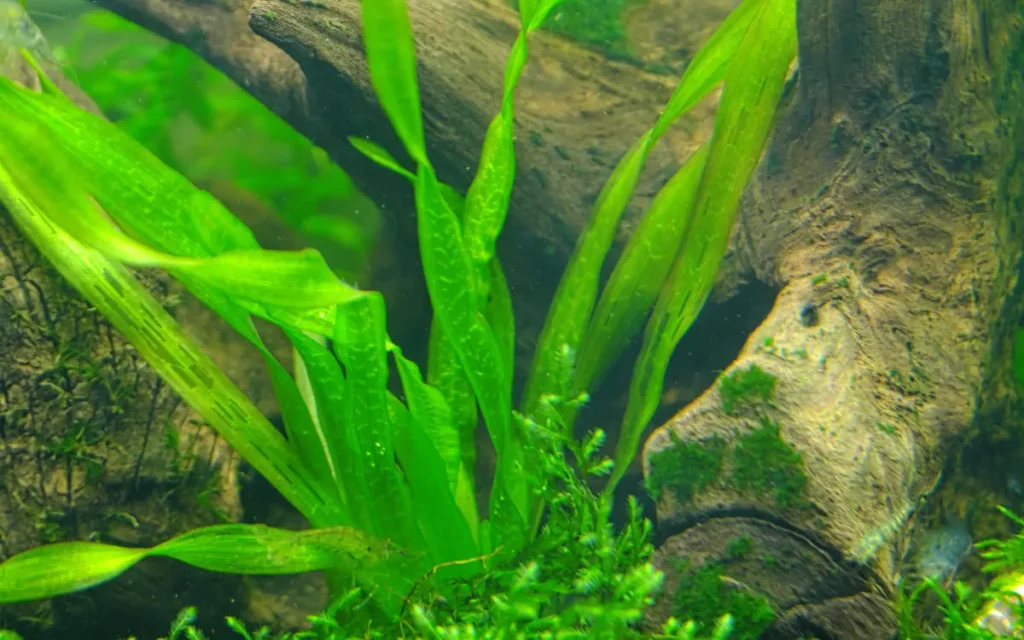
- Scientific Name: Vallisneria spiralis
- Common Name: Vallisneria
- Origin: Worldwide
- Skill Level: Easy
- Light Level: Moderate to high
- Temperature Range: 68-82°F (20-28°C)
- Flow Rate: Low to moderate
- CO2 Requirement: Not necessary
- Special Notes: Vallisneria’s long, grass-like leaves create a natural stream effect, gently swaying in the water. This provides a peaceful environment that bettas love.
Vallisneria, commonly found in tropical and subtropical regions, is recognized by its long, ribbon-like leaves. This plant is easy to care for and can create a beautiful, flowing effect in your tank, resembling an underwater meadow.
8.Banana Plant
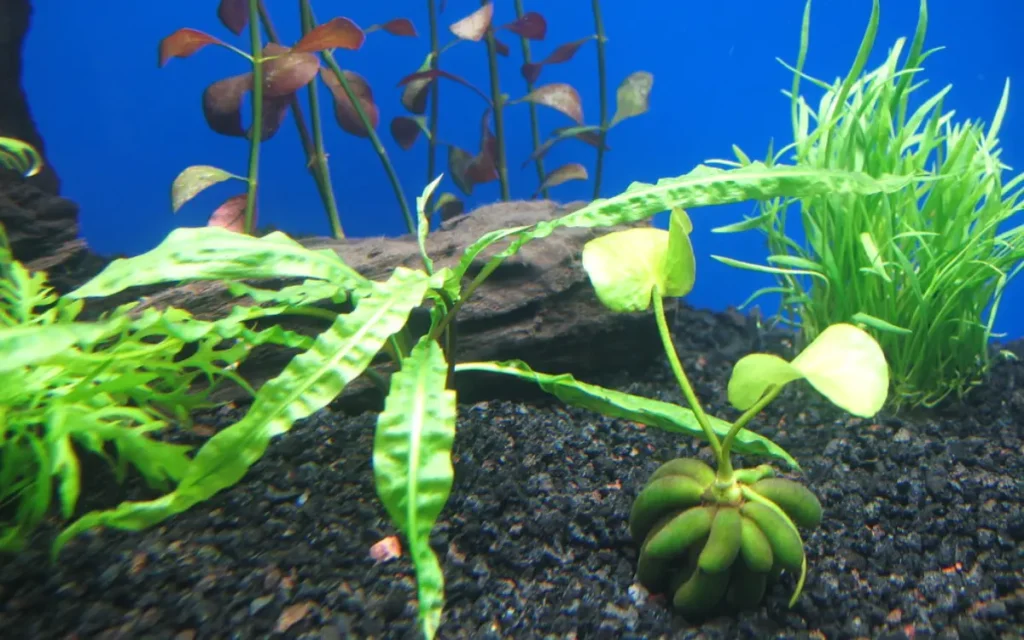
- Scientific Name: Nymphoides aquatica
- Common Name: Banana Plant
- Origin: North America
- Skill Level: Easy
- Light Level: Moderate
- Temperature Range: 68-82°F (20-28°C)
- Flow Rate: Low to moderate
- CO2 Requirement: Not necessary
- Special Notes: The Banana Plant has unique, banana-shaped roots that sit at the bottom of the tank. Its quirky look makes it a fun addition, and bettas enjoy swimming around its leaves.
The Banana Plant, with its distinctive banana-shaped roots, originates from the southeastern United States. Its broad, floating leaves add an interesting visual element and provide shade and shelter for your betta.
9.Java Moss
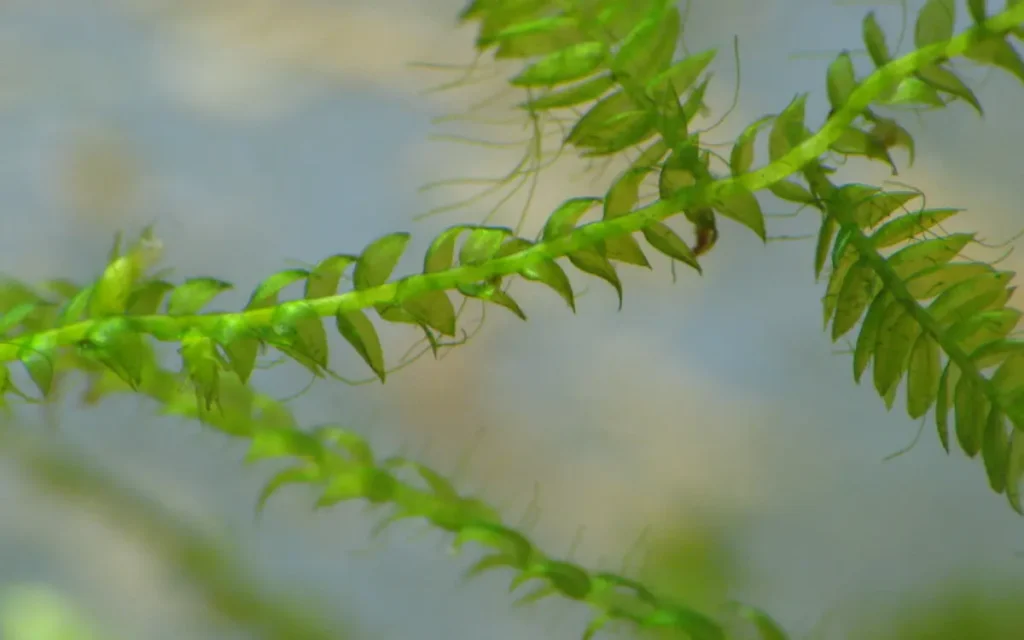
- Scientific Name: Taxiphyllum barbieri
- Common Name: Java Moss
- Origin: Southeast Asia
- Skill Level: Easy
- Light Level: Low to moderate
- Temperature Range: 68-82°F (20-28°C)
- Flow Rate: Low to moderate
- CO2 Requirement: Not necessary
- Special Notes: Java Moss is incredibly versatile and easy to grow. You can use it to create carpets, cover driftwood, or form little hiding spots. It’s perfect for a betta’s playful nature.
Java Moss, another Southeast Asian native, is incredibly versatile. It can be attached to rocks, driftwood, or spread out as a carpet. This plant’s dense, mossy appearance creates a lush, green landscape that bettas love to swim through and hide within.
10.Bucephalandra
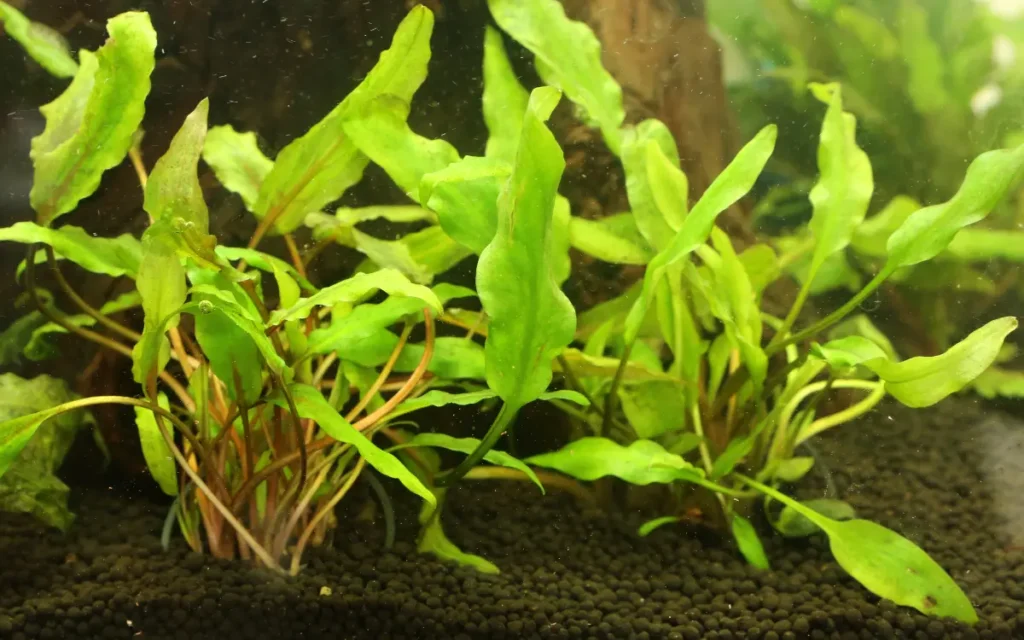
- Scientific Name: Bucephalandra sp.
- Common Name: Bucephalandra
- Origin: Borneo
- Skill Level: Moderate
- Light Level: Low to moderate
- Temperature Range: 68-82°F (20-28°C)
- Flow Rate: Low to moderate
- CO2 Requirement: Beneficial but not required
- Special Notes: Bucephalandra plants are known for their vibrant colors and interesting textures. They add a touch of exotic beauty and thrive well in betta tanks.
Bucephalandra, native to Borneo, boasts textured leaves in various colors, adding diversity to your tank. This slow-growing plant thrives in low-light conditions, making it an excellent choice for beginners seeking a unique addition to their tank.
11.Anacharis
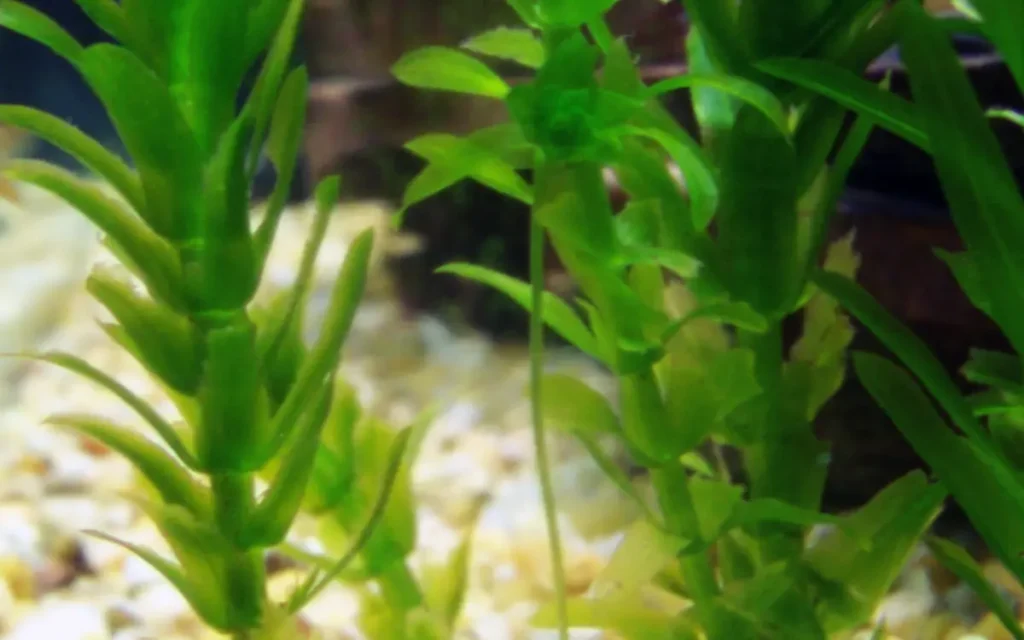
- Scientific Name: Egeria densa
- Common Name: Anacharis
- Origin: South America
- Skill Level: Easy
- Light Level: Moderate
- Temperature Range: 68-82°F (20-28°C)
- Flow Rate: Low to moderate
- CO2 Requirement: Not necessary
- Special Notes: Anacharis is a fast-growing plant that helps oxygenate your tank and keep the water clean. Its dense foliage is a great playground for your betta.
Anacharis, also known as Brazilian Waterweed, is found in temperate and subtropical regions of the Americas. Its fast growth helps control algae, and it can be planted or left floating, providing great cover and a vibrant green backdrop.
12.Pogostemon stellatus ‘Octopus’
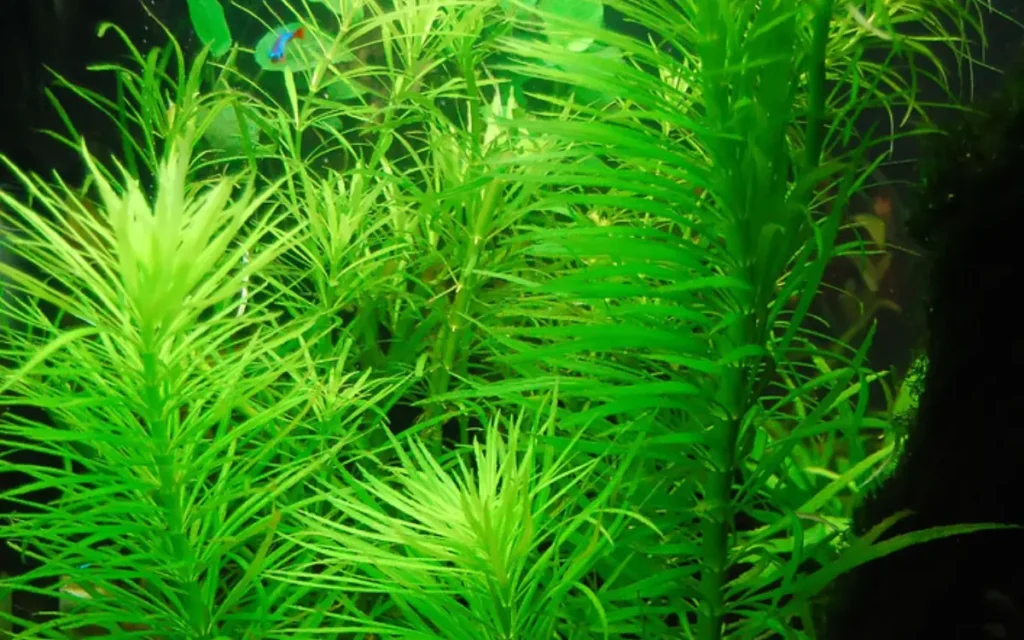
- Scientific Name: Pogostemon stellatus
- Common Name: Octopus Plant
- Origin: Asia
- Skill Level: Moderate
- Light Level: Moderate to high
- Temperature Range: 68-82°F (20-28°C)
- Flow Rate: Low to moderate
- CO2 Requirement: Beneficial
- Special Notes: The Octopus Plant has whimsical, tentacle-like leaves that create a playful environment. It’s a unique and fun addition to any betta tank.
This plant, with its thin, tentacle-like leaves, originates from Southeast Asia. Its rapid growth and unique appearance make it a fun addition, creating an intriguing environment for your betta.
13.Anubias Nana
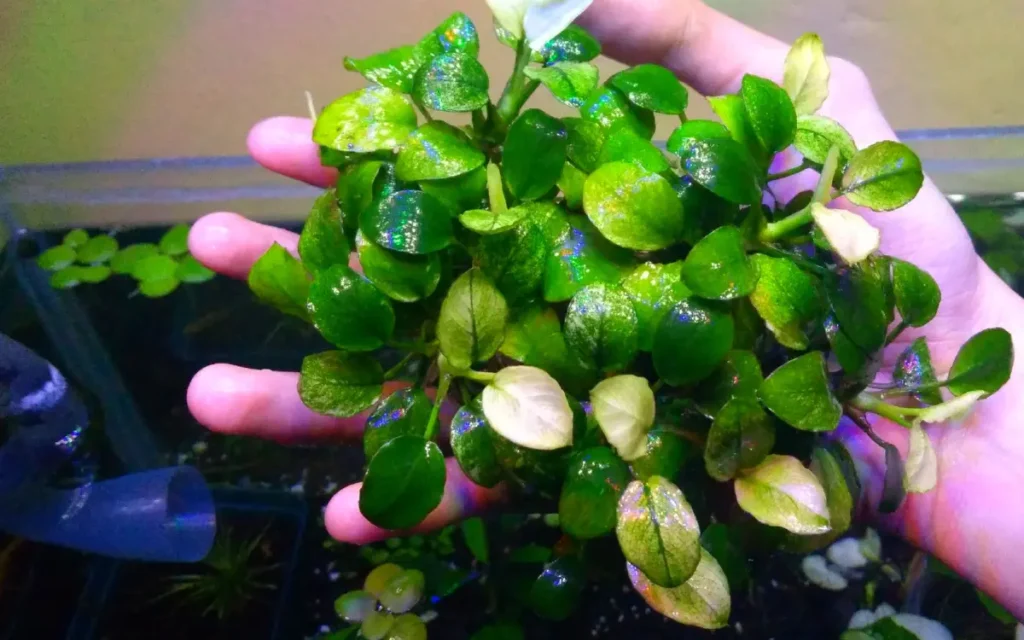
- Scientific Name: Anubias barteri var. nana
- Common Name: Anubias Nana
- Origin: West Africa
- Skill Level: Easy
- Light Level: Low to moderate
- Temperature Range: 72-82°F (22-28°C)
- Flow Rate: Low to moderate
- CO2 Requirement: Not necessary
- Special Notes: A smaller variety of Anubias, this plant is perfect for compact tanks. Its sturdy leaves and slow growth make it an excellent choice for beginners.
A smaller variety of Anubias, Anubias Nana is equally hardy and originates from Africa. Its compact size and ease of care make it perfect for smaller tanks, providing a lush, green accent.
14.Dwarf Water Lettuce
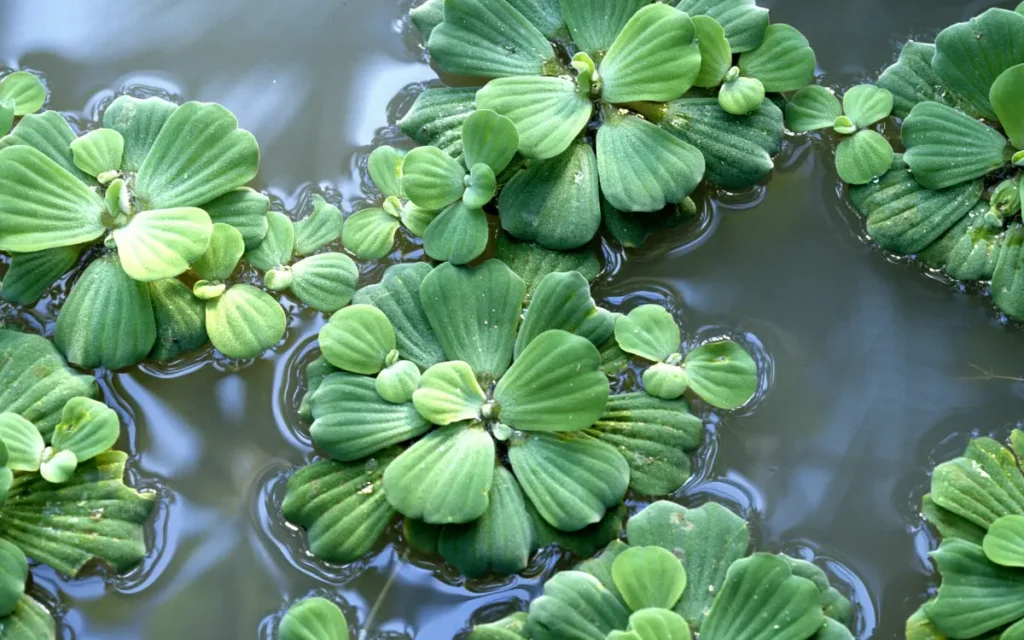
- Scientific Name: Pistia stratiotes
- Common Name: Dwarf Water Lettuce
- Origin: Africa and South America
- Skill Level: Easy
- Light Level: Moderate
- Temperature Range: 72-82°F (22-28°C)
- Flow Rate: Low to moderate
- CO2 Requirement: Not necessary
- Special Notes: This floating plant adds a lush, green cover to your tank. It helps filter the water and provides shade for your betta, creating a serene environment.
Dwarf Water Lettuce, native to tropical regions, floats on the surface and provides excellent cover. Its attractive rosettes and ease of maintenance make it a popular choice for beginners.
15.Water Wisteria
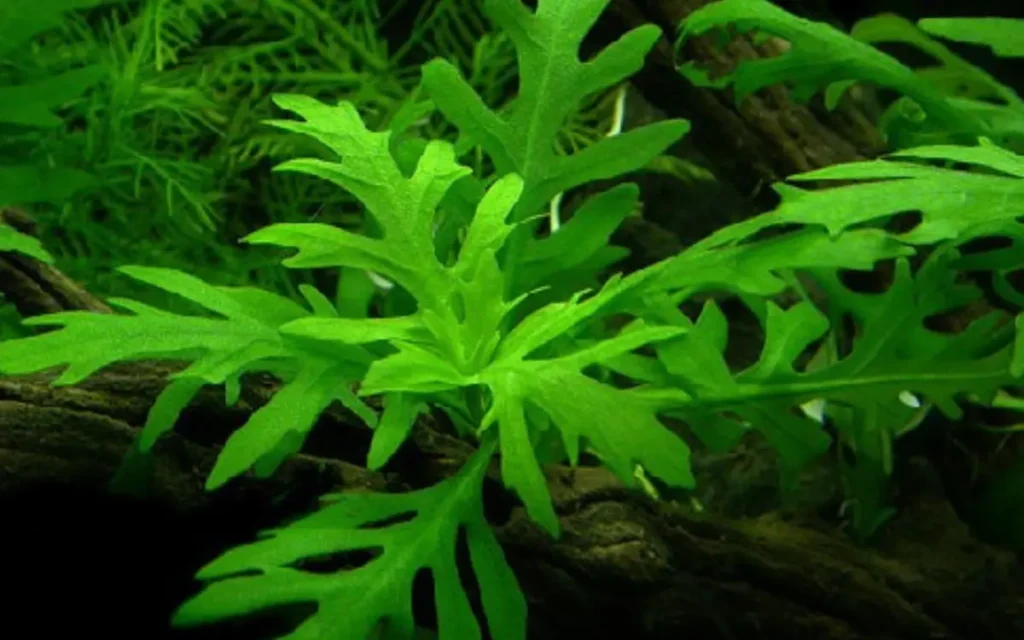
- Scientific Name: Hygrophila difformis
- Common Name: Water Wisteria
- Origin: India and Southeast Asia
- Skill Level: Easy
- Light Level: Moderate
- Temperature Range: 70-82°F (21-28°C)
- Flow Rate: Low to moderate
- CO2 Requirement: Beneficial but not required
- Special Notes: With its delicate, lacy leaves, Water Wisteria creates a beautiful underwater forest. It’s fast-growing and easy to maintain, making it a great choice for any betta tank.
Water Wisteria, found in the tropical regions of India and Southeast Asia, can be planted or left floating. Its feathery leaves grow quickly, providing great hiding spots and a dynamic underwater landscape.
16.Dwarf Sagittaria
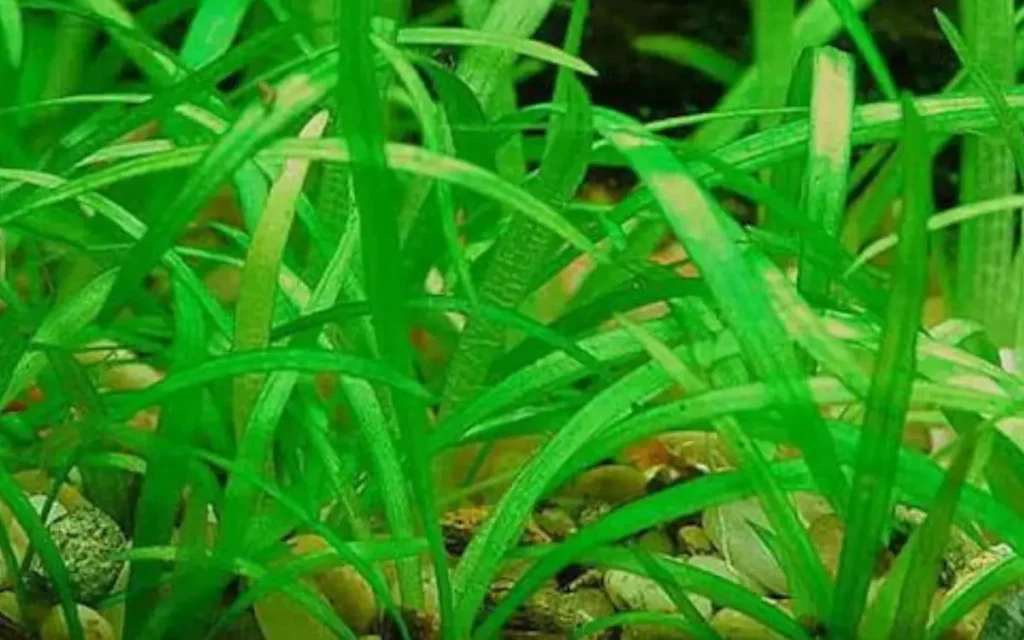
- Scientific Name: Sagittaria subulata
- Common Name: Dwarf Sagittaria
- Origin: North America
- Skill Level: Easy
- Light Level: Moderate to high
- Temperature Range: 68-82°F (20-28°C)
- Flow Rate: Low to moderate
- CO2 Requirement: Beneficial but not required
- Special Notes: This low-growing plant forms a lush, green carpet that’s perfect for bettas to explore. It’s easy to care for and adds a natural touch to your tank.
Native to the Americas, Dwarf Sagittaria is a low-growing plant that creates a grassy carpet. Its ease of care and natural look make it a great addition for beginners seeking to create a lush, green environment.
17.Cabomba Aquatica
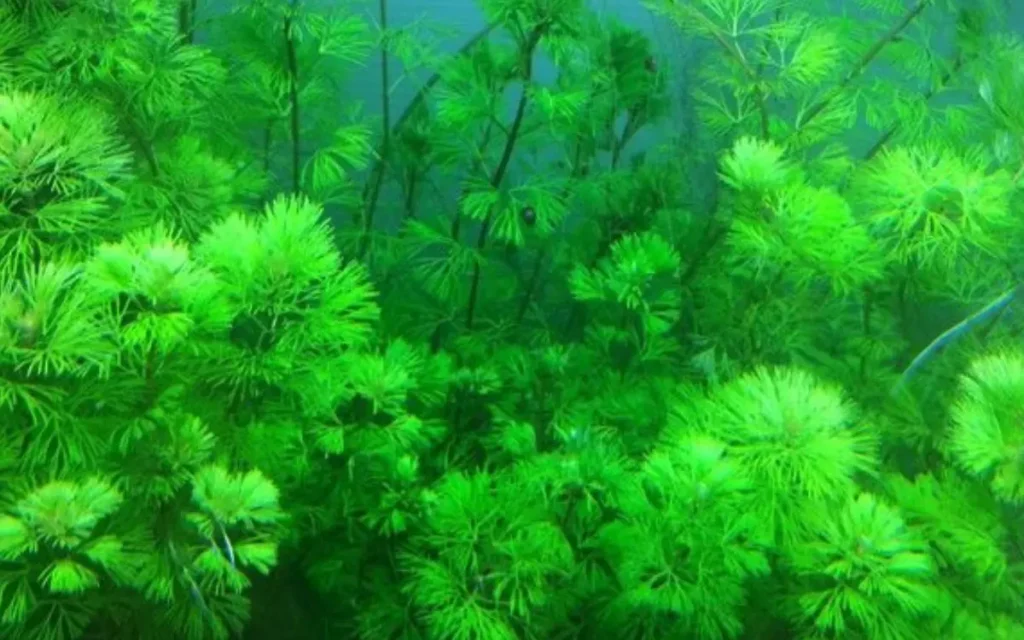
- Scientific Name: Cabomba aquatica
- Common Name: Cabomba
- Origin: South America
- Skill Level: Moderate
- Light Level: Moderate to high
- Temperature Range: 72-82°F (22-28°C)
- Flow Rate: Low to moderate
- CO2 Requirement: Beneficial
- Special Notes: This plant’s fine, feathery leaves create a soft, inviting environment. It’s great for adding depth and texture to your betta tank, though it needs a bit more light and care.
Cabomba Aquatica, with its feathery leaves, originates from the Americas. This plant provides excellent cover and a beautiful, textured backdrop, making your tank look vibrant and full of life.
18.Red Root Floaters
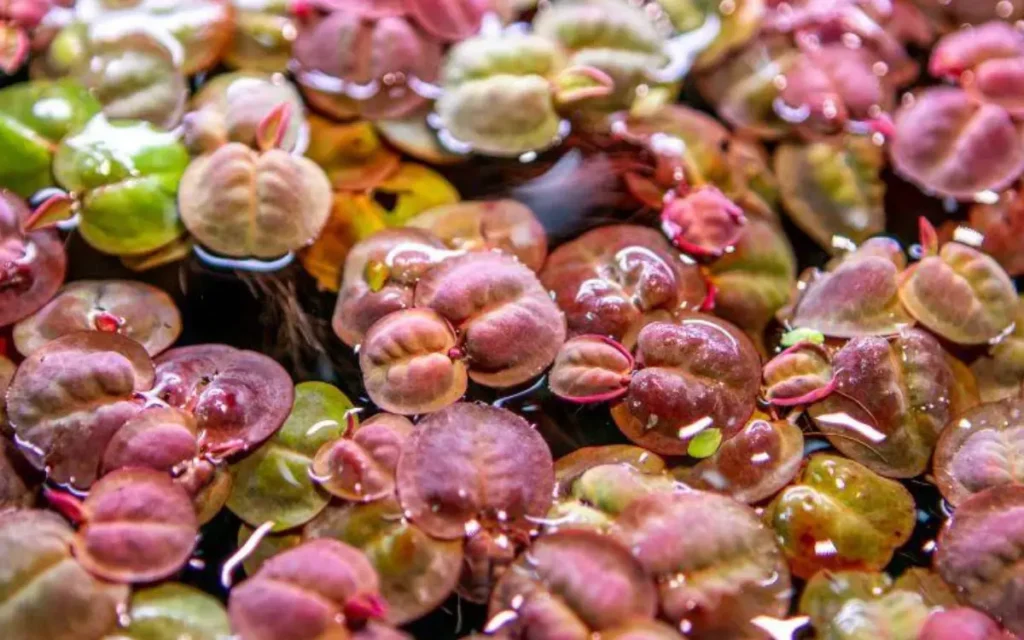
- Scientific Name: Phyllanthus fluitans
- Common Name: Red Root Floaters
- Origin: South America
- Skill Level: Moderate
- Light Level: Moderate to high
- Temperature Range: 70-82°F (21-28°C)
- Flow Rate: Low
- CO2 Requirement: Beneficial
- Special Notes: These vibrant, floating plants add a pop of color and provide a safe haven for your betta. They also help improve water quality by absorbing excess nutrients.
Red Root Floaters, native to South America, are floating plants with striking red roots. They provide shade and cover, making your betta feel secure while adding a pop of color to your tank.
19.Brazilian Pennywort
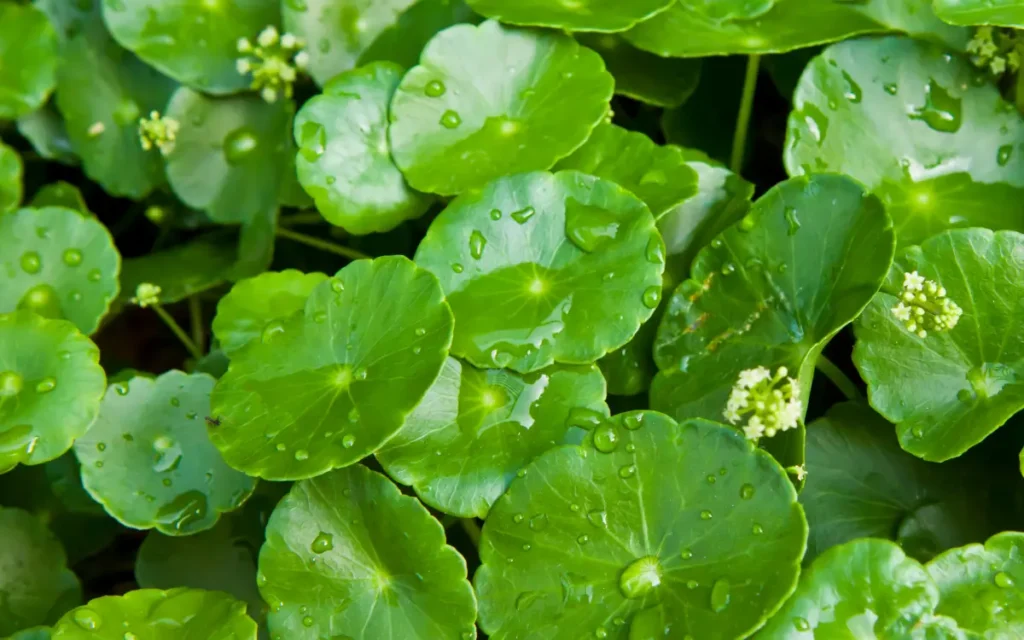
- Scientific Name: Hydrocotyle leucocephala
- Common Name: Brazilian Pennywort
- Origin: South America
- Skill Level: Easy
- Light Level: Moderate
- Temperature Range: 68-82°F (20-28°C)
- Flow Rate: Low to moderate
- CO2 Requirement: Not necessary
- Special Notes: With its round, green leaves, Brazilian Pennywort creates a serene and tranquil environment. It’s versatile and can be planted or left to float, providing your betta with plenty of hiding and resting spots.
Brazilian Pennywort, found in the wetlands of South America, can be planted or left floating. Its round leaves grow quickly, offering great cover and an attractive, natural look to your tank.
20.Driftwood
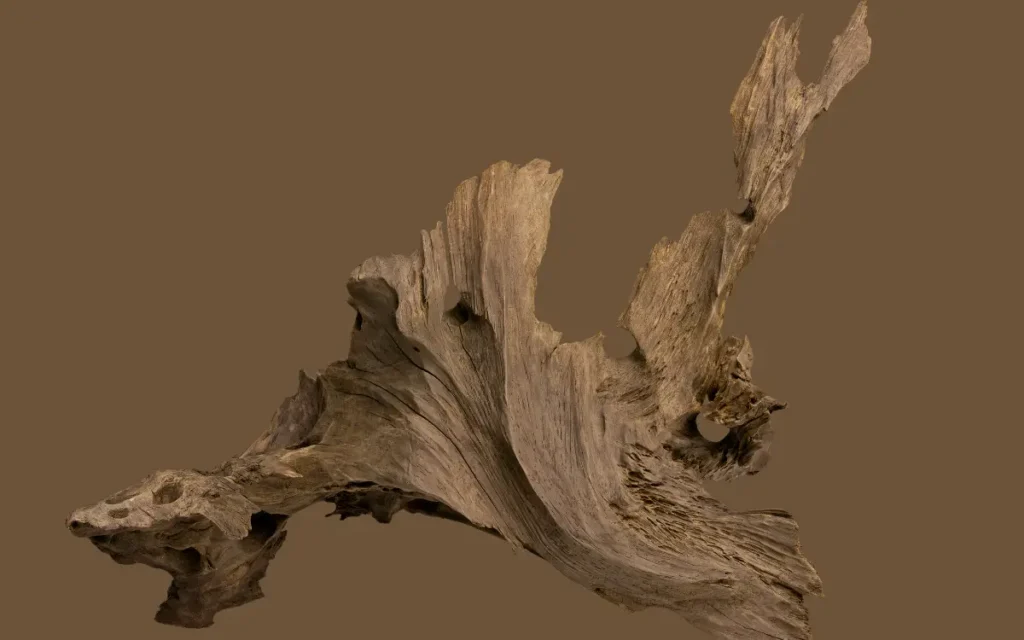
- Scientific Name: N/A
- Common Name: Driftwood
- Origin: Worldwide
- Skill Level: Easy
- Light Level: N/A
- Temperature Range: N/A
- Flow Rate: N/A
- CO2 Requirement: Not necessary
- Special Notes: While not a plant, driftwood is an essential addition to betta tanks. It provides hiding spots, supports beneficial bacteria, and can be adorned with plants like Java Moss for a natural look.
While not a plant, Driftwood can be adorned with plants like Java Moss and Anubias. Originating from various freshwater environments, driftwood adds a natural, rustic look and provides essential hiding spots for your betta.
Best Floating Plants for Betta Fish
Floating plants are an excellent addition to a Betta fish tank. They provide numerous benefits, including shelter, natural filtration, and aesthetic enhancement. Here are some of the best floating plants for Betta fish:
1.Duckweed
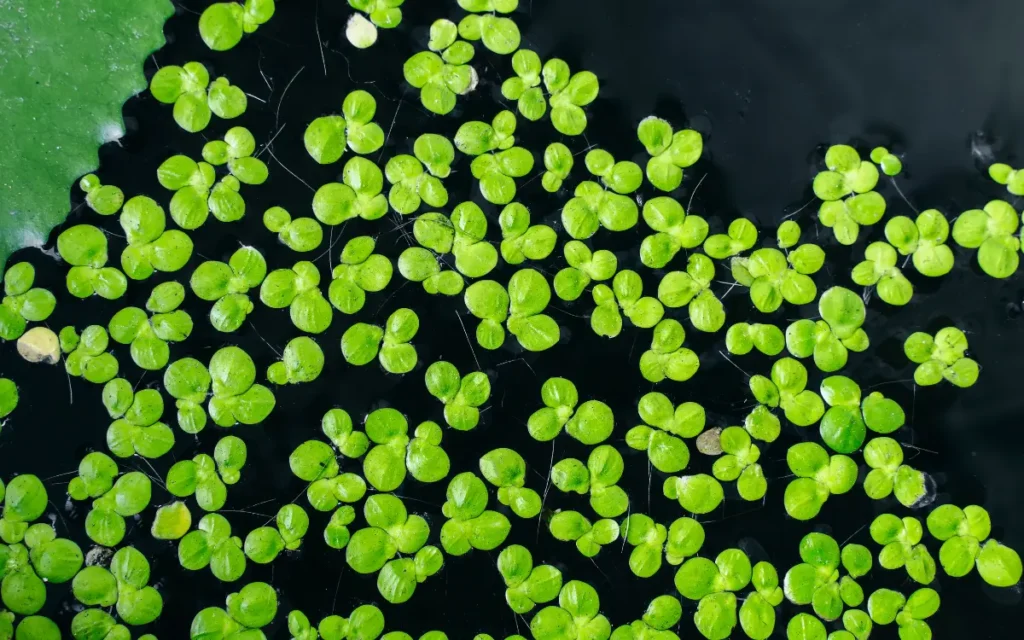
- Scientific Name: Lemna minor
- Common Name: Duckweed
- Origin: Worldwide
- Skill Level: Easy
- Light Level: Low to High
- Temperature Range: 60-90°F (15-32°C)
- Flow Rate: Low to Moderate
- CO2 Requirement: Not required
- Special Notes: Can grow rapidly and may require regular thinning to prevent overgrowth.
Duckweed (Lemna minor) is a small, free-floating plant with tiny, oval leaves. It’s found worldwide and is easy to care for, thriving in various light conditions. Duckweed grows rapidly and helps improve water quality by absorbing excess nutrients and providing surface cover.
2.Amazon Frogbit
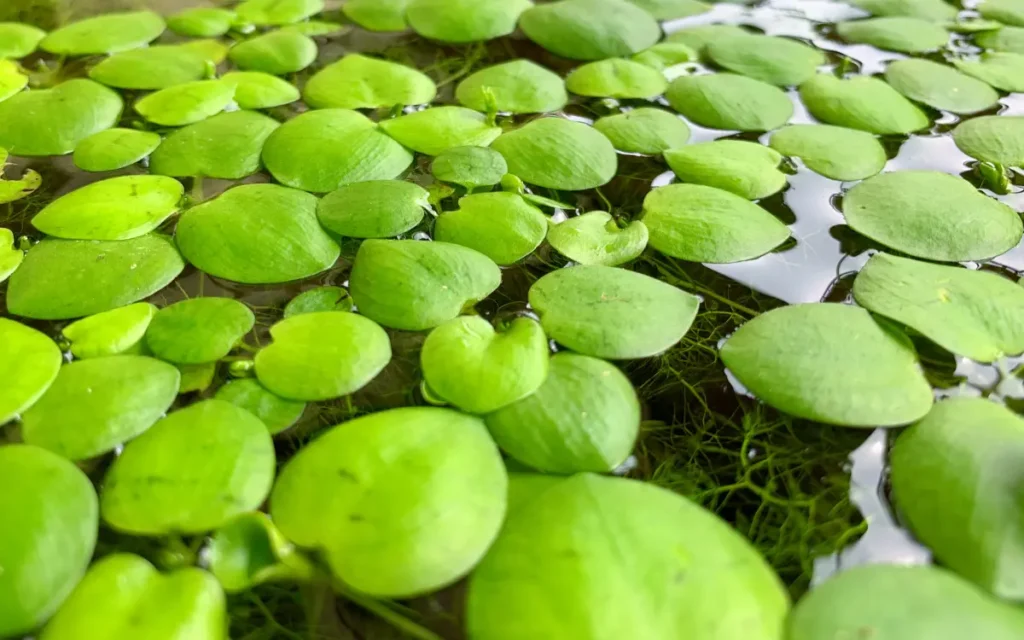
- Scientific Name: Limnobium laevigatum
- Common Name: Amazon Frogbit
- Origin: Central and South America
- Skill Level: Easy
- Light Level: Moderate to High
- Temperature Range: 64-86°F (18-30°C)
- Flow Rate: Low
- CO2 Requirement: Not required
- Special Notes: Long roots provide excellent cover; regular removal of dead leaves needed.
Amazon Frogbit (Limnobium laevigatum) is a floating plant with round, thick leaves and long, trailing roots. Originating from Central and South America, it provides excellent shade and hiding spots for Betta fish. It thrives under moderate to high light and requires minimal maintenance.
3.Salvinia
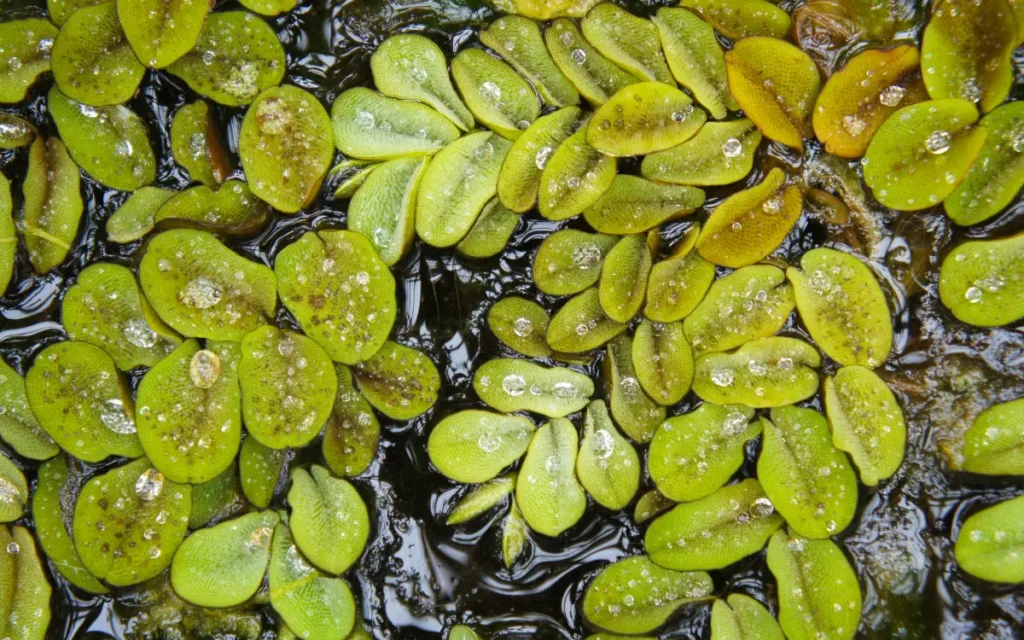
- Scientific Name: Salvinia minima
- Common Name: Salvinia
- Origin: South America
- Skill Level: Easy
- Light Level: Low to Moderate
- Temperature Range: 60-86°F (15-30°C)
- Flow Rate: Low to Moderate
- CO2 Requirement: Not required
- Special Notes: Grows quickly under moderate light and helps with nutrient uptake.
Salvinia (Salvinia minima) is a small, oval-leaved floating plant with a fuzzy texture, originating from South America. It is easy to care for, thrives in low to moderate light, and quickly absorbs excess nutrients. Salvinia provides excellent surface cover and reduces light penetration.
4.Water Spangles (Azolla)
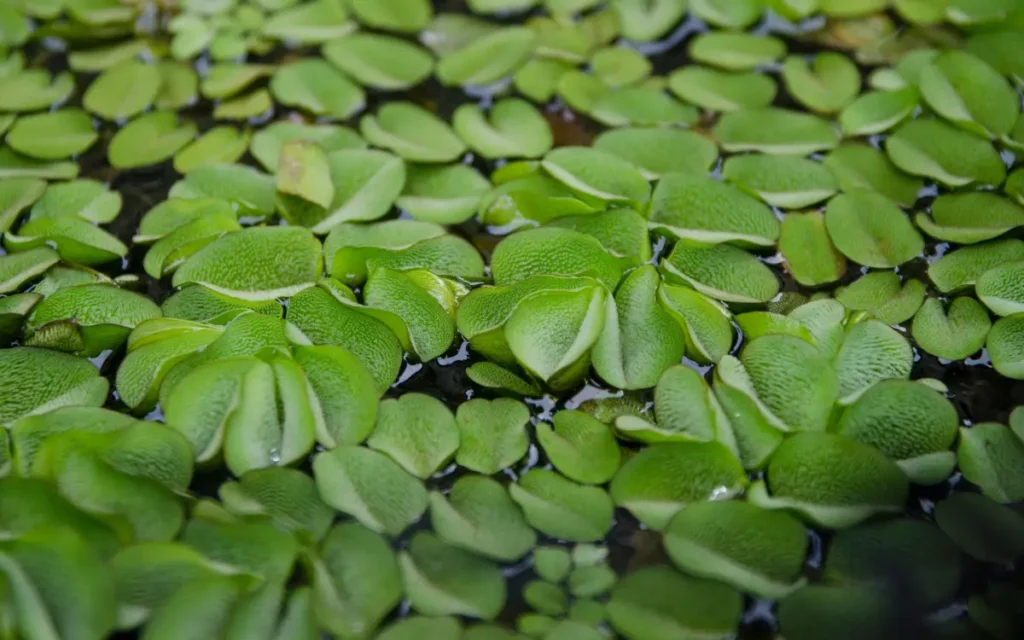
- Scientific Name: Azolla filiculoides
- Common Name: Water Spangles
- Origin: North America, South America
- Skill Level: Easy
- Light Level: Low to Moderate
- Temperature Range: 68-82°F (20-28°C)
- Flow Rate: Low
- CO2 Requirement: Not required
- Special Notes: Fern-like appearance; can grow rapidly and may need regular thinning.
Water Spangles (Azolla filiculoides) is a small, fern-like floating plant found in North and South America. It thrives in low to moderate light and quickly absorbs excess nutrients. Azolla provides excellent surface cover, reducing light penetration and helping maintain water quality.
How to Set Up and Maintain a Planted Betta Tank
Setting up and maintaining a planted Betta tank involves careful planning and regular upkeep to create a thriving environment for both the plants and the Betta fish. Here is a step-by-step guide to help you through the process:
Step 1: Choose the Right Tank
Size: A minimum of 5 gallons is recommended for a Betta fish. Larger tanks provide more stability and space for plants.
Shape: Opt for a tank with a larger surface area to ensure better oxygen exchange.
Step 2: Select Substrate
Nutrient-Rich Substrate: Use a substrate that supports plant growth, such as aquarium soil or nutrient-rich gravel.
Depth: Ensure the substrate is at least 2-3 inches deep to anchor the plants securely.
Step 3: Add Water
Dechlorinate: Use a water conditioner to remove chlorine and chloramine from tap water.
Temperature: Fill the tank with water at a temperature suitable for Betta fish (78-80°F or 25-27°C).
Step 4: Install Equipment
Filter: Choose a gentle filter that does not create strong currents, as Betta fish prefer calm waters.
Heater: Install a heater to maintain a consistent temperature.
Lighting: Use an aquarium light suitable for plant growth, ensuring it provides 8-10 hours of light per day.
Step 5: Arrange Hardscape
Decorations: Add driftwood, rocks, and other decorations to create a natural look and provide hiding spots.
Layout: Plan the layout considering the size and growth pattern of plants.
Step 6: Plant the Tank
Selection: Choose a mix of foreground, midground, and background plants.
Planting: Gently plant the roots into the substrate, ensuring they are anchored well.
Step 7: Fill the Tank
Gradual Fill: Slowly fill the tank with water to avoid disturbing the substrate and plants.
Initial Cycling: Allow the tank to cycle for 2-4 weeks before adding the Betta fish to establish beneficial bacteria.
You can read also more about aquariums sizes and shapes
Maintaining the Tank
Step 1: Regular Water Changes
Frequency: Perform a 20-30% water change every week to maintain water quality.
Procedure: Use a siphon to remove debris and replace it with dechlorinated water.
Step 2: Monitor Water Parameters
Testing: Regularly test water parameters such as pH, ammonia, nitrite, and nitrate levels.
Adjustments: Make necessary adjustments to keep the water parameters within the optimal range for Betta fish and plants.
Step 3: Prune and Trim Plants
Growth Management: Trim overgrown plants to prevent overcrowding and ensure light penetration.
Health Check: Remove dead or decaying leaves to maintain plant health.
Step 4: Fertilize as Needed
Liquid Fertilizers: Use liquid fertilizers to provide essential nutrients for plant growth.
Root Tabs: Place root tabs in the substrate near heavy root feeders.
Step 5: Clean Equipment
Filter Maintenance: Clean the filter media regularly to ensure proper filtration without removing beneficial bacteria.
Heater and Light: Check and clean the heater and light to ensure they function correctly.
Step 6: Monitor Betta Health
Observation: Regularly observe your Betta for signs of stress or illness.
Diet: Feed your Betta a balanced diet and avoid overfeeding.
The Benefits of Live Plants for Betta Health and Behavior
Incorporating live plants into a Betta fish tank offers numerous benefits that enhance the health and well-being of your Betta. Here are some of the key advantages:
1.Improved Water Quality
Oxygen Production: Live plants produce oxygen during photosynthesis, which helps maintain healthy oxygen levels in the tank.
Nutrient Absorption: Plants absorb harmful nutrients such as ammonia, nitrites, and nitrates, reducing toxic buildup and promoting a healthier environment.
2.Natural Filtration
Biological Filtration: Live plants support beneficial bacteria growth, which aids in breaking down waste and maintaining water clarity.
Reduced Algae Growth: Plants compete with algae for nutrients, helping to keep algae growth under control.
3.Enhanced Aesthetic Appeal
Natural Look: Live plants create a more natural and aesthetically pleasing environment, mimicking the Betta’s natural habitat.
Variety and Color: The variety of plant shapes, sizes, and colors adds visual interest and enhances the overall appearance of the tank.
4.Stress Reduction
Hiding Spots: Plants provide hiding spots and shelter, helping Betta fish feel secure and reducing stress.
Territory: Betta fish are territorial, and live plants help create defined areas within the tank, reducing territorial aggression.
5.Stimulated Natural Behavior
Exploration: Betta fish enjoy exploring their environment, and live plants provide a stimulating and enriching habitat.
Resting Places: Broad-leafed plants offer resting spots for Betta fish to perch and relax.
6.Enhanced Breeding Conditions
Bubble Nests: Live plants provide support for bubble nests, which male Betta fish build during breeding.
Fry Protection: Plants offer hiding places for fry (baby Betta fish), increasing their chances of survival.
7.Alleviation of Boredom
Interaction: Betta fish interact with their environment, and live plants offer a dynamic and engaging setting that keeps them active and curious.
Mental Stimulation: The varied textures and structures of live plants provide mental stimulation, preventing boredom and promoting overall well-being.
8.Natural Feeding Opportunities
Microorganisms: Live plants host microorganisms that Betta fish can feed on, providing a natural and supplementary food source.
Infusoria: Plants can produce infusoria (tiny aquatic organisms), which are an excellent food source for Betta fry.

